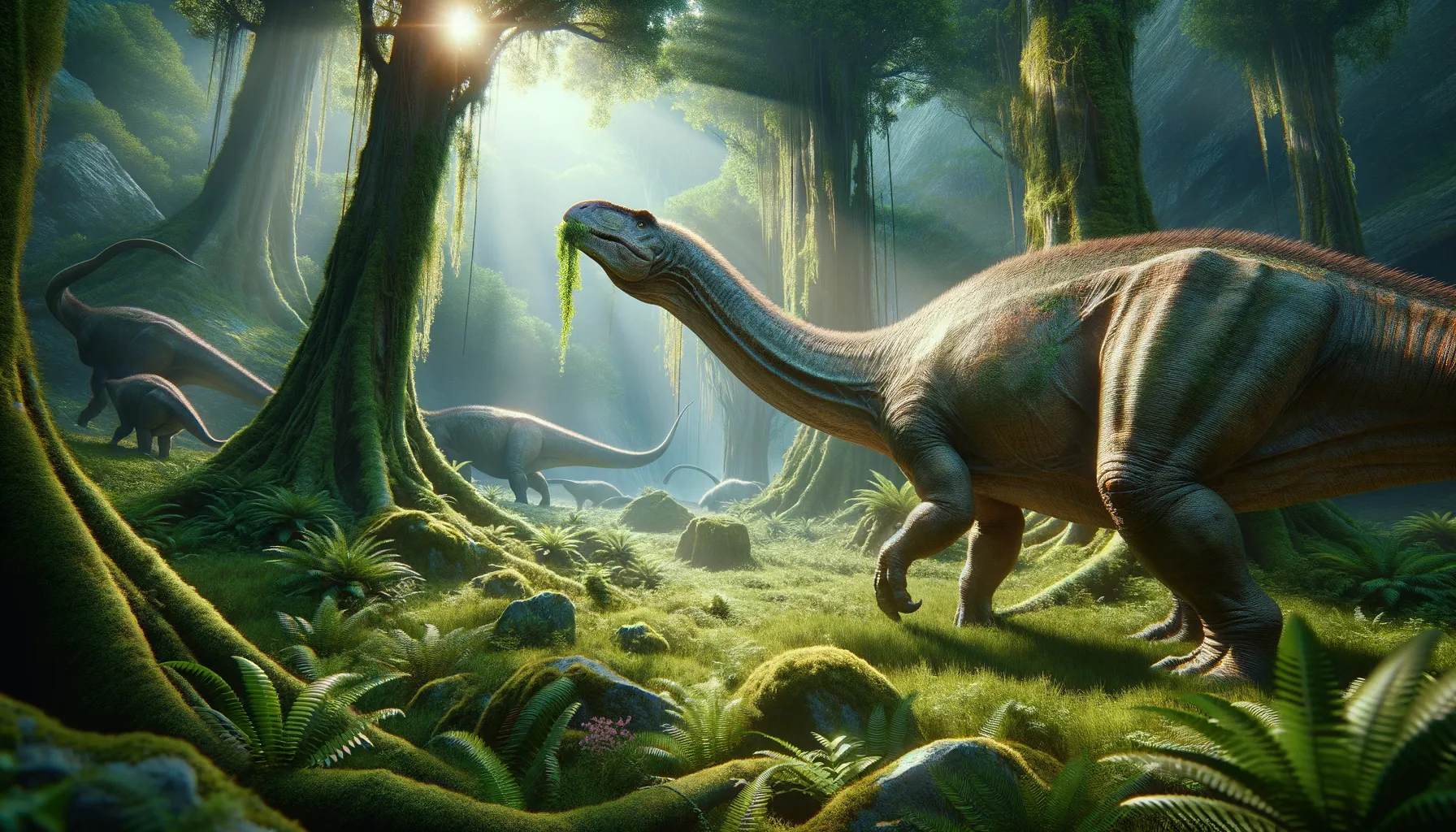
Antarctosaurus
Titanic herbivore of the ancient world!
Period
Cretaceous
Length
Measured up to 60 feet in length.
Height
Stood approximately 15 feet tall.
Weight
Weighed around 14,000 pounds (7 tons).
Antarctosaurus was a massive dinosaur, known for being one of the larger sauropods that roamed the Earth during the Cretaceous period. With its long neck and large body, it relied on a herbivorous diet, grazing comfortably on the vegetation that thrived in its environment. Its giant stature allowed it to reach higher vegetation that other herbivores couldn’t access, and its size likely deterred some predators.
Diet
Antarctosaurus was a herbivore, meaning it fed on plants. Its long neck helped it reach high vegetation, such as leaves from tall trees. It likely consumed a large amount of food daily to sustain its massive body.
Hunting
As a herbivore, Antarctosaurus did not hunt for food. It likely foraged for plant material on the ground and in trees. Its size protected it from many predators, so it relied on passive defense mechanisms.
Environmental challenges
Antarctosaurus faced challenges such as finding enough food to maintain its large size. The changing climate and environments during the Cretaceous period required adaptability to different types of vegetation. Predation threats existed, although few predators were large enough to take on a fully grown Antarctosaurus.
Speed
Likely moved slowly due to its large size.
Lifespan
Could have lived for several decades.
First discovery
Discovered in Argentina in the 1920s.
Fun Facts
- Antarctosaurus was a giant dinosaur that lived during the Late Cretaceous period.
- Despite its name, Antarctosaurus fossils have been found in South America, not Antarctica.
- This dinosaur was one of the largest sauropods, possibly reaching lengths of over 18 meters (60 feet).
- Antarctosaurus had a long neck, typical of sauropod dinosaurs, which helped it reach high vegetation.
- Its name means 'southern lizard,' referring to its discovery in the southern hemisphere.
- Unlike many other sauropods, its exact skull shape remains a mystery due to incomplete fossil evidence.
- It lived in a time when flowering plants began to emerge and diversify, possibly influencing its diet.
Growth and Development
Antarctosaurus would hatch from large eggs and grow rapidly during its juvenile years. As it grew, its long neck and tail became more pronounced. The growth required a plentiful supply of food, and juvenile dinosaurs would have been more vulnerable to predation.
Habitat
Antarctosaurus lived in regions that were likely warm and lush with vegetation, allowing it to thrive on the abundant plant life. Its habitat would have included forested areas where it could graze comfortably. It coexisted with other plant-eating dinosaurs, often moving in herds.
Interaction with other species
Interactions with other species involved grazing alongside other herbivorous dinosaurs. Although its size offered some protection, juvenile Antarctosaurus would have been at risk from predators and needed the protection of the herd. Competition for food with other herbivores likely occurred.
Natural lifespan
Antarctosaurus could naturally live beyond 50 years if it survived predators in its youth.
Reproduction
Reproduction involved laying eggs, as is common among dinosaurs. Eggs would be laid in nests, possibly in communal nesting sites for added protection. Hatchlings would require protection and would grow rapidly to avoid predation.
Social behaviour
Antarctosaurus likely exhibited social behavior typical of herd animals. Herds provided protection for the young and allowed adults to work together to find food. Such social structures could have been an effective strategy against predators.
Fossil locations
Fossils of Antarctosaurus have primarily been found in South America, particularly Argentina. Its remains provide crucial information about the diversity of sauropods in this region during the Cretaceous. The condition of fossils also suggests it lived in riverine environments or near water sources.
